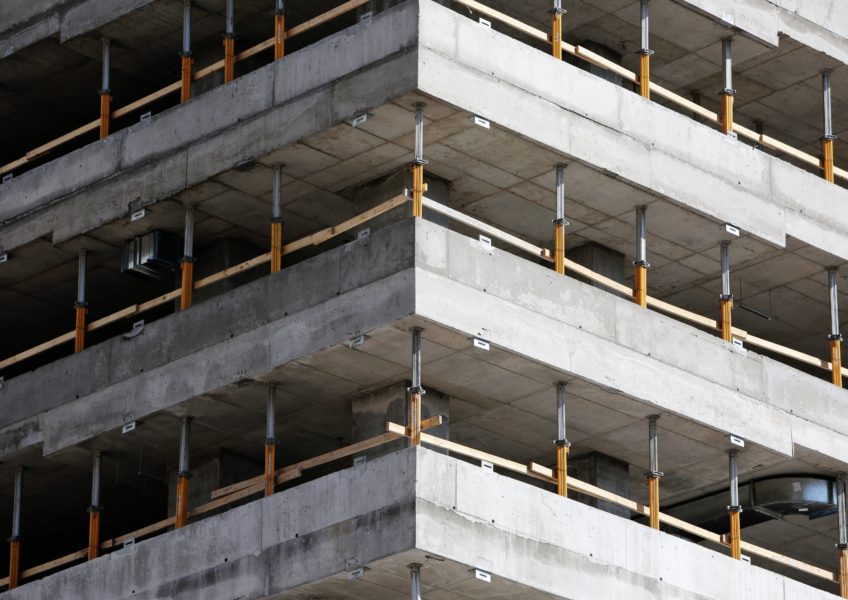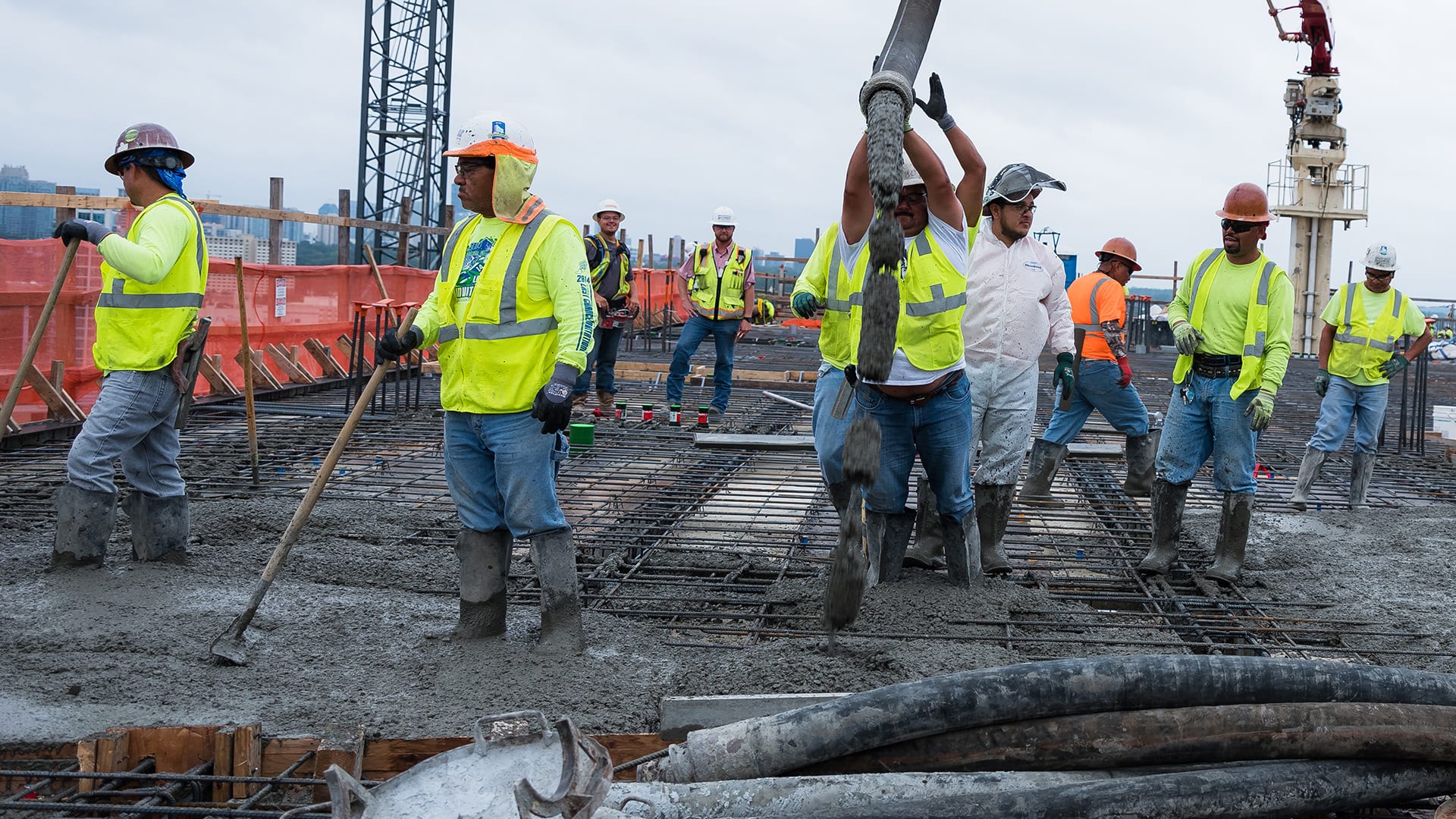Concrete Contractors Rancho Cucamonga: How to Evaluate Suppliers, Mixes, and Surface Finishes
Wiki Article
The Vital Duty of Concrete Foundation in Structural Honesty and Long Life
When it involves constructing a residential property, the foundation is a lot more vital than you might think. Concrete foundations provide unparalleled stamina and longevity, ensuring your framework can endure different environmental difficulties. Without a solid base, you risk possible problems like moving or fracturing, which can jeopardize safety and security and value. Understanding the nuances of concrete foundations might be the secret to protecting your investment for several years ahead. So, what should you consider following?Comprehending the Importance of Concrete Foundations
Concrete foundations are essential to the total stability of any type of structure, as they give the vital support needed to withstand numerous loads and environmental problems. When you believe regarding building a home or a business room, the foundation is the initial point you ought to consider. It serves as a barrier against dampness, securing your property from water damage. A well-placed concrete foundation additionally avoids settling and shifting, which can bring about cracks in walls and floorings. You'll intend to ensure that the structure is correctly developed and enhanced, as this influences the longevity of your building. Additionally, a solid structure can enhance power performance by minimizing air leakages. Bear in mind, ignoring the importance of a concrete structure can bring about costly repair work down the line. Investing in a top quality foundation upfront is vital for the honesty and sturdiness of your structure.
Benefits of Concrete Structures for Structural Stability
While several factors add to a building's architectural stability, concrete structures supply unmatched toughness and toughness. You'll appreciate that concrete can endure extreme weather, standing up to both dampness and temperature level fluctuations. This durability indicates your framework is much less likely to experience breaking or changing gradually, which can endanger its safety.Additionally, concrete's integral weight gives a strong base, preventing activity during natural events like quakes or floodings. When you pick a concrete structure, you're likewise going with reduced upkeep; unlike timber, it won't rot or attract pests, conserving you time and cash in repairs.Moreover, concrete's fire resistance provides added safety, guaranteeing your framework can sustain heats without considerable damage. Generally, purchasing a concrete structure suggests you're focusing on the lasting security and stability of your building, making it a smart option for any building project.Common Sorts Of Concrete Foundations
When it comes to constructing structures, recognizing the usual kinds of concrete foundations can help you make informed choices for your task. One of the most common types include slab-on-grade, crawl room, and full basement foundations.A slab-on-grade structure is a basic, economical choice, where a thick concrete slab is put straight on the ground. This type works well in cozy climates, as it reduces heat loss.Crawl room structures elevate the home slightly over ground, permitting ventilation and access to pipes and electrical systems. This layout can assist prevent dampness issues.Full basement structures supply extra living or storage space while giving exceptional structural assistance. They require even more excavation and are usually used in cooler climates to prevent frost heave.Aspects to Consider When Creating a Concrete Foundation

Best Practices for Putting Up Concrete Foundations
When you're installing a concrete foundation, correct website prep work is important to assure stability (West Coast General Engineering commercial concrete). You'll also need to comprehend reinforcement methods to boost strength and toughness. Finally, do not overlook the treating procedure, as it plays a basic role in achieving a solid foundationWebsite Prep Work Value
Although it may seem uncomplicated, appropriate site prep work is crucial for ensuring a strong and sturdy concrete foundation. Begin by removing the location of any kind of debris, greenery, or organic material that could jeopardize the foundation's integrity. Next, assess the soil type and compaction; you may need to excavate or include materials to produce a steady base. Level the ground to ensure even weight circulation and avoid settling concerns later. Mounting proper water drainage systems is also necessary to prevent water buildup, which can damage the foundation over time. Mark out the structure's measurements accurately to assist the putting process. By complying with these actions, you'll set the phase for a successful concrete foundation that stands the examination of time.
Reinforcement Techniques Described
As soon as the website is appropriately prepared, the next action in ensuring a durable concrete structure includes executing effective support techniques. You need to start by utilizing steel rebar, which gives tensile stamina and helps protect against breaking. Lay the rebar in a grid pattern, making certain it rises making use of spacers to maintain appropriate coverage. In addition, consider making use of cable mesh for extra support, specifically in locations subject to heavy tons. Do not forget to tie the rebar crossways securely with cord. For bigger foundations, fiber reinforcement can enhance durability, decreasing the danger of shrinking fractures. Constantly comply with regional building regulations and standards to make certain conformity. By using these support strategies, you'll greatly boost your foundation's stamina and durability, laying a strong foundation for your framework.Healing Process Fundamentals
To ensure your concrete structure treatments correctly, it's essential to keep sufficient dampness and temperature level conditions immediately after pouring. Begin by covering the surface area with a damp cloth or plastic bed linen to preserve dampness. This maintains the concrete hydrated, avoiding fractures and making certain strength. You ought to likewise keep track of the temperature; optimal treating conditions are between 50 ° F and 90 ° F. If it's as well warm, haze the surface area routinely to avoid fast evaporation. For winter, take into consideration making use of protecting blankets to maintain warmth. Aim for a curing period of a minimum of seven days, as this is essential for ideal strength development. By following these best practices, you'll enhance your structure's toughness and long life, making sure architectural stability for years to find.Upkeep of Concrete Foundations for Long Life
To maintain your concrete foundation solid and long lasting, regular inspections are necessary. You try this web-site ought to also guarantee reliable water drainage options are in place to stop water damages. If you identify any type of cracks, resolving them promptly will save you from bigger troubles down the line.
Routine Examinations and Evaluations
While routine inspections and analyses might look like a job, they're important for preserving the honesty of your concrete foundation. By regularly examining for cracks, changes, or indicators of wear, you can capture possible issues before they intensify right into pricey repairs. Search for any type of water merging around the structure or unusual settling, as these can indicate underlying problems. It's also a good idea to keep an eye on any kind of adjustments in your home's structure, like doors that stick or windows that don't open smoothly. Maintaining a record of your assessments helps track modifications in time, permitting proactive upkeep. Eventually, these assessments guarantee your foundation remains stable, sustaining the durability and security of your whole structure. Do not overlook this important aspect of homeownership!Reliable Drain Solutions
Routine evaluations can reveal concerns like drain problems that could compromise your concrete foundation's stability. To stop water build-up, ensure your gutters and downspouts straight water far from the structure. Installing French drains pipes can properly reroute surface area and groundwater, minimizing pressure on your foundation wall surfaces. Furthermore, grading the dirt around your home helps assure that water moves away, instead of pooling near your foundation.Consider utilizing sump pumps in areas susceptible to flooding, as they proactively eliminate excess water. Regularly look for clogs in water drainage systems and clear them promptly. You'll safeguard your structure's integrity and durability by taking these proactive steps. Bear in mind, efficient water drainage services are necessary for maintaining a strong, sturdy concrete foundation.Motivate Split Repairs
When you discover splits in your concrete structure, resolving them quickly is important for keeping its durability. Tiny splits can promptly evolve into bigger concerns, endangering the structural integrity of your home. On a regular basis evaluate your foundation for indications of damages, such as horizontal or upright cracks. If you identify any, do not wait-- fix them quickly. You can use epoxy shots or concrete patching compounds, which work for securing cracks. Constantly adhere to the producer's guidelines and consider getting in touch with a professional for considerable damages. Remember, timely fixings not only enhance your structure's durability however additionally conserve you money in the future by protecting against more comprehensive fixings down the line. Stay proactive, and your foundation will certainly continue to be solid and secure.Attending To Usual Concerns With Concrete Foundations
Concrete foundations can deal with different concerns with time, making it critical to determine and resolve them immediately. Among one of the most usual problems is cracking, which can occur due to temperature changes or clearing up soil. If you notice splits, it's necessary to evaluate their size and deepness; little cracks can often be secured, while larger ones may require professional evaluation.Water intrusion is an additional significant problem. Excess dampness can lead to mold and mildew growth and architectural degeneration. Guarantee correct drain around your structure to reduce this risk. Additionally, seek indicators of changing or bowing wall surfaces, as this can suggest underlying issues with your foundation's stability.Regular inspections are fundamental to capture these troubles early. If you identify any type of concerning indicators, do not think twice to seek advice from a foundation expert. By More Info remaining aggressive, you can preserve the integrity and longevity of your concrete structure, ensuring your home remains secure and safe.Often Asked Questions
Just How Does Soil Type Affect Concrete Foundation Efficiency?
Dirt type considerably influences concrete foundation efficiency. If you've got extensive clay, for instance, it can trigger shifting and splitting. Sandy dirt might result in resolving. Recognizing your dirt assists ensure a steady foundation.Can Concrete Foundations Be Repaired if Harmed?
Yes, you can fix broken concrete structures. Depending on the extent of you can look here the damage, methods like epoxy shot or piece jacking can restore security. It's best to speak with a professional for effective options.What Is the Regular Life-span of a Concrete Foundation?
A concrete foundation usually lasts 30 to 100 years, depending upon factors like dirt problems, climate, and maintenance. You'll wish to maintain an eye on it to guarantee it continues to be in excellent shape throughout its life expectancy.Exist Alternative Products to Concrete for Foundations?
Yes, there are choices to concrete for foundations, like steel, lumber, or also recycled materials. Each choice has one-of-a-kind benefits and disadvantages, so you need to consider your task's details demands when picking the appropriate product.Just How Does Environment Impact Concrete Foundation Longevity?
Climate considerably influences concrete structure resilience (West Coast General Engineering commercial concrete). Extreme temperatures, wetness, and freeze-thaw cycles can deteriorate the product, bring about splits and architectural concerns. You need to consider local climate conditions when planning your structure to assure lasting efficiencyReport this wiki page